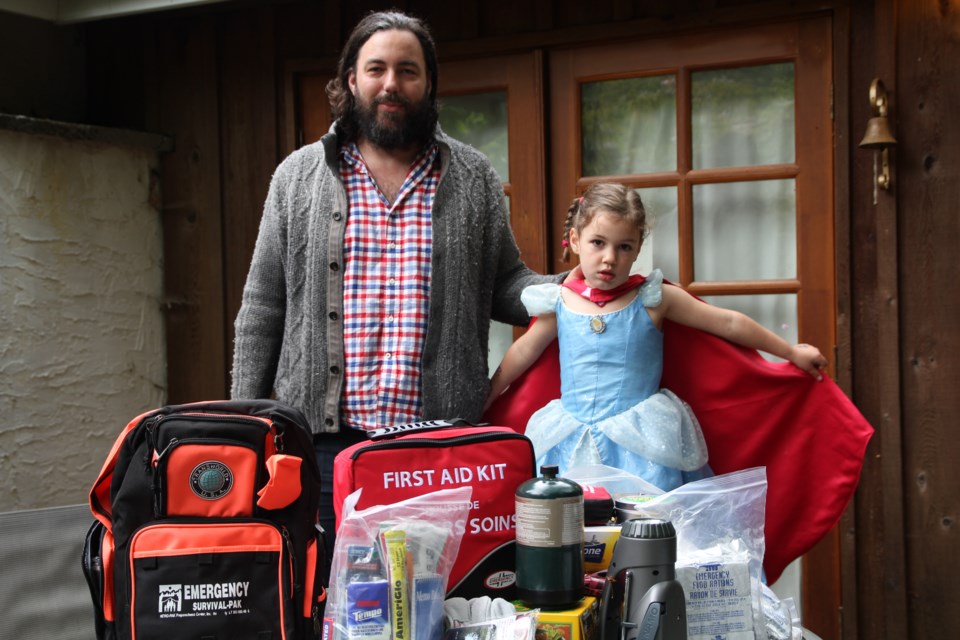Shawn Cole is a man with a plan, not to mention rations of non-perishable foods, water and a first aid kit. Cole was one of more than 50 Bowen Islanders who attended last week’s “Emergency Preparedness Party,” put together by the municipality’s Emergency Planning Coordinator, Amanda Ockeloen. He says the experience has motivated him to revise his plan and update his kit.
Cole says he started learning about earthquake preparedness shortly after his now four and a half year-olddaughter Delilah was born.
“I’m from the Maritimes where the scariest things we have to contend with, in terms of disasters, are big snow storms,” says Cole. “I feel like most people who are from British Columbia have accepted the fact that a major earthquake will hit at some point and don’t worry about it too much. I find that kind of strange, I need to have a plan in order to cope with the idea.”
Cole says that in his efforts at self-education on earthquake preparedness he has realized there are a lot of mixed messages as well as outdated information being circulated.
“When I participated in the ‘Great Canadian Shakeout’ I was told that in case of an earthquake, you should get under a table and cover your head and neck,” he says. “But I work in music studios, often without tables to duck under. When I asked about the next best option I was told to go into door thresh-holds, but at the Emergency Preparedness Party I asked the same question and was told that if there are no tables, the next best option is a corner or a stairway but it is still important to shelter your neck and head from falling debris.”
At the Emergency Preparedness Party, Cole says, there was also a debate about using BICS as a meeting place in an emergency situation.
“A number of people said that if disaster strikes, go to BICS, but then the people who actually work at BICS said it’s not an infirmary, and therefore not the place to go. We realized that there is no central meeting place, and it was communicated to us that the best plan of action is to stay home. The woman from the Red Cross gave us a directive: Shelter in Place (meaning stay home) and get to know your neighbours and check on them, especially if they are single or elderly.”
Cole says that since attending the Emergency Preparedness Party, he has strategized a way out of the house for his family if an earthquake hits while they’re in bed (there are no doors leading to the outside from that part of the house) and is encouraging his wife and daughter to practice climbing out of the chosen window in case of an emergency.
He’s also made his emergency kit more accessible, and made sure that even five-year old Delilah knows where it is. Revisiting his kit, he’s decided to replace the now-expired jug of water with a purifying straw, called a LifeStraw and his now-expired flat of canned soup with dehydrated meals that will last for twenty-five years.
“We had a chance to try some of them at the Emergency Preparedness Party and I was surprised at how tasty they actually were,” says Cole.
“And I’ve calculated the cost of replacing my soup cans every five years and realized that ultimately, the cost of the dehydrated meals will be roughly the same.”
Ockeloen says that this kind of action is exactly what she had hoped for coming out of the Emergency Preparedness Party.
“Every family needs a plan and needs to be prepared to go it alone for at least 72 hours, if not a week in an emergency situation,” she says. “No matter how well our community has planned for disaster response, in a large- scale event resources may quickly become overwhelmed. To ensure the safety and well being of you and your family, you should prepare now to take care of your own basic needs.”
Information and additional tips for emergency preparedness is available at www.GetPrepared.ca



